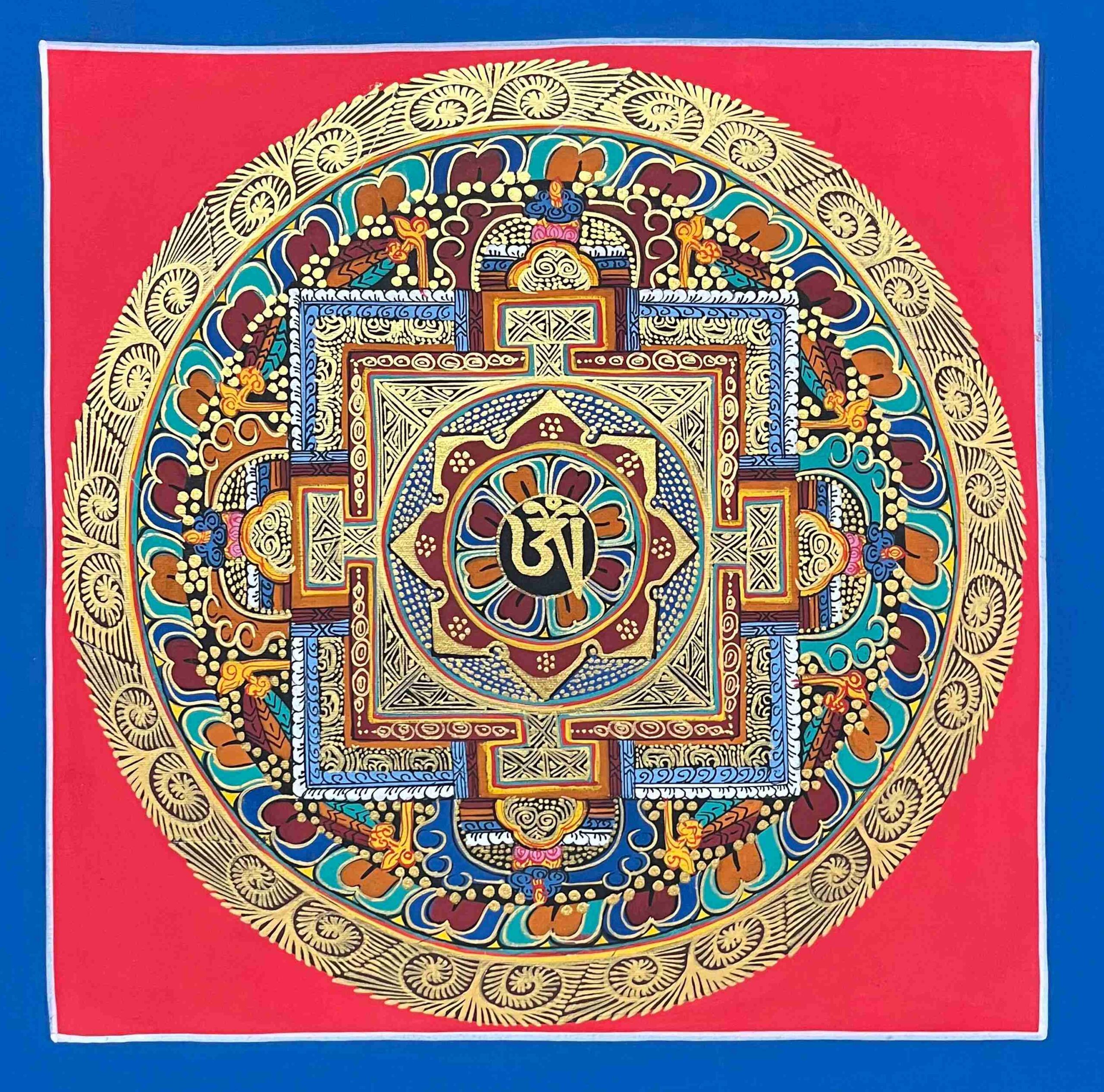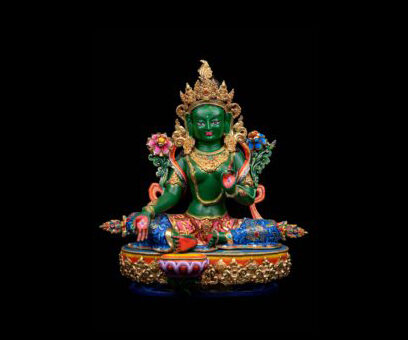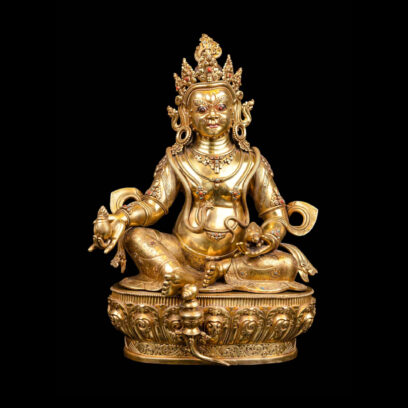HQ Buddhist Handmade Thangka Painting of Tibetan Om Mandala, Hand-Painted, Student Mandala
▫ Item Code: HME25510
▫ Weight: 100 Grams
▫ Size: 20 x 20 cm
▫ Material: Cotton Canvas and Mineral Colors
▫ Availability: Available
☛ Student Mandala: Brief Introduction
Mandala, a dedicated student of the sacred art of Thangka painting, has embarked on a journey to master this revered tradition. With a deep passion for preserving this ancient craft, they have joined a Thangka school to refine their skills. In an effort to support their school and fellow students, Mandala offers their artwork at an affordable price. However, as interest in Thangka painting as a profession declines, dedicated artists like Mandala have become increasingly rare, making their commitment to this art form even more significant.
☛ Mandala Thangka: A Sacred Art Form
Mandala Thangka painting is a highly revered form of sacred Buddhist art. These paintings feature intricate, symmetrical patterns, geometric designs, and symbolic elements, often centered around a deity or Buddha figure. Traditionally used as meditation aids, Mandala Thangkas guide practitioners toward inner peace, harmony, and enlightenment. Through precise brushwork and profound symbolism, these sacred artworks encourage mindfulness, concentration, and a deeper spiritual connection with the universal truths of Buddhism.
☛ Tibetan Om: Symbolism and Meaning
In Tibetan Buddhism, Om is a sacred syllable frequently placed at the beginning of mantras and dharanis. The most well-known mantra, Om Mani Padme Hum, is associated with Avalokiteśvara, the Bodhisattva of Compassion. This mantra, particularly linked to the four-armed Shadakshari form of Avalokiteśvara, holds deep spiritual significance. Additionally, as a bija mantra (seed syllable), Om is considered profoundly sacred in Esoteric Buddhism, representing the essence of the universe and the path to enlightenment.
☛ Introduction to Thangka
A thangka, also known as tangka, thanka, or tanka, is a vibrant and intricate Tibetan Buddhist painting that visually conveys spiritual teachings. Created with meticulous detail on cotton or silk appliqué, thangkas depict Buddhist deities, sacred mandalas, and religious narratives.
Unlike traditional framed paintings, thangkas are designed to be rolled up for storage, preserving their longevity. To protect their delicate structure, they are mounted on fabric backings and often adorned with a silk cover. Proper storage in a dry environment is essential to maintain their vibrancy and ensure their preservation over time.







